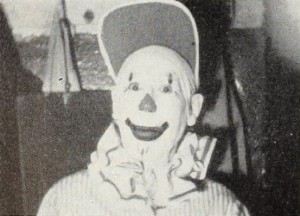
"A carefully detailed study of the biggest show on earth, Ringling Bros. and Barnum & Bailey Circus bears lively evidence to Oscar H. Horovitz's intense interest and attentive recording over a ten year period. The glamour and the tinsel, the thrills and the panoply, the sawdust and the sweat, all have been caught by his camera and painstakingly mounted. Backstage glimpses show something of what it takes to produce the massive extravaganza. The clowns in their dressing rooms reveal a little of the secret of their art. But in the eager faces of young spectators and the breathless attention of their elders can be read the circus's enduring mystery and perennial allure. The filmer's technical capabilities are manifestly demonstrated. Despite the obvious exposure handicaps, individual shots of admirable artistry turn up often enough to enliven any audience. With all these factors in its favor, however this massively impressive movie may leave some viewers wishing for a little less detail, a little more simplicity, and a still more stringent use of the editing scissors." Movie Makers, Dec. 1950, 465-466.
"This picture, in its original 1600 foot length, was selected by Movie Makers as one of the Ten Best in its 1950 competition. Oscar Horovitz has completely re-edited it, compressing it to 800 feet for what, we are sure, is a greatly improved picture. Certainly it is one of the best film documents of a circus ever seen by American Cinematographer's reviewers in many years, and we are sure that Cecil B. DeMille, who currently is producing a picture on circus life, would agree on the merits of its photography. Horovitz's camera—a Bell & Howell 70-DE camera—has caught the atmosphere of Circus Day with colorful scenes, both inside and outside the tents, beginning with the Sideshows and continuing inside the big top where he recorded all the big spectacles from a variety of angles. It is evident that making the picture required Horovitz to visit the circus on several different occasions, for it shows careful study and preplanning and a wise choice of positions for setting up his camera. The interiors, made under the big top with its attendant inferior lighting for photography, are commendable and offer a fine example of what can be done with Kodachrome film in the hands of a skilled cine photographer." American Cinematographer, May 1951, 190.
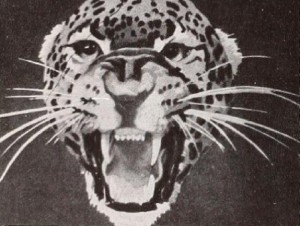
"Competence plus completeness distinguish Ringling Brothers and Barnum & Bailey Circus. Oscar H. Horovitz started his film with sequences of the circus's winter quarters in Florida and followed it as it entrained for Northern performances. Unloading the circus comes next, and, after informal views of the crews at work setting up tents and the performers preparing for work, there is a complete picture of the show in the big top. The quality of the lighting, although limited by the amount of illumination provided by the circus, is still astonishingly good. Even better is the sequencing of the scenes of the performances, for Mr. Horovitz succeeds in altering his camera positions almost as freely as if the circus were staged especially for him." Movie Makers, Dec. 1943, 478.
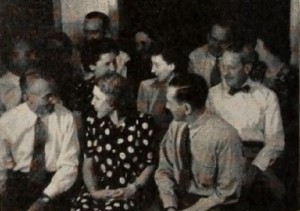
"This clever 16mm. picture is amazing in several ways, but two characteristics stand out. It is only 250 feet long and it was completely filmed, with the exception of the double exposed titles, in one evening. George Merz, the producer of this novel study, warned his guests that, when they came to see the Louis-Conn fight televised, they would have to earn their way by acting in his production. Ringside Seats at Home shows the guests arriving, reacting to the fight and paying off bets. It also contains surprisingly clear footage of the fight itself, including the knockout in the eighth round. A unique and attractive picture, the movie shows what can be done if you work a little, pray a little and gamble a lot." Movie Makers, Dec. 1947, 539.
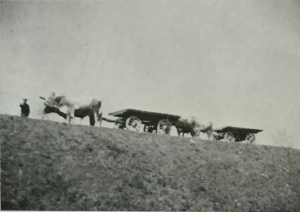
"doc. a fantasia"/avant-garde documentary Risveglio, regista Vittorio Cossato, collaboratore tecnico Antonio Marzari. Il film presenta in una successione di inquadrature rigorosamente fisse, il contrasto tra il passato e il presente espresso talora attraverso simboli (come nella prima parte l'uomo che, visto di schiena cammina per un terreno paludoso, triste e squallido) ma quasi sempre per visioni di natura, di nuove generazioni al lavoro nel traffico dei porti, delle strade e nelle adunate. Vi sono dei passaggi freschi e il film nel complesso non manca di una certa omogeneità ritmica. Awakening, director Vittorio Cossato, technical collaborator Antonio Marzari. The film presents, in a succession of rigorously fixed shots, the contrast between the past and the present, sometimes expressed through symbols (as in the first part, the man who, seen from behind, walks through a sad and bleak, marshy terrain), but almost always through visions of nature, of new generations at work in the traffic of ports, roads and rallies. There are some fresh passages and the film in its entirety does not lack a certain rhythmic homogeneity. —Il Ventuno 29 (Review of the G.U.F. of Venice), June 1935, p. 16
"The faded colours do not detract from this charming record of life in Preston, on the river Ribble. Children play in the street, women stroll in Avenham Park, and shoppers crowd an outdoor market. Community events and the bright lights of Preston at night complete this picture of life in the Lancashire town (now a city)." (BFI Player)
"Color film celebrating Turner's love for classic automobiles. Turner discovers an old road named Callao and becomes interested in exploring the dirt road with his classic Dodge. Film shares the history of the pony express in Utah." Church History Library.
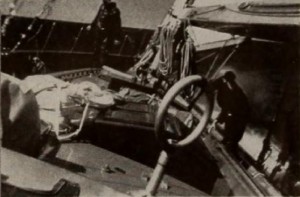
"Lovers of boats and devotees of movie making alike will probably never see enough of Rochester Race, produced by Walter F. Chappelle jr. in the summer of 1952. For this picture is one of the most complete and authentic records of big-league yacht racing that has been produced to date. For big league indeed was the 72 foot yawl Escapade, owned by Wendell Anderson of the Detroit Yacht Club and sailing as scratch boat in the Rochester point-to-point race westward to Hamilton, Ont., eastward to Stony Point Light, and then back to the Rochester inlet. And big league too was Mr. Chappelle's detailed coverage of this grind, as the proud beauty — with a crew of fourteen and 2630 square feet of working sail area — barreled through heavy seas, slatted and drifted in the calms — but came home by 38 seconds the winner. Working under difficult (and often dangerous) conditions, the producer nevertheless achieved a variety and quality of scenes which are amazing. His handling of side or back lighting, as a big Genoa or spinnaker jib arched out from the Escapade, creates many moments of breath-taking beauty. With Rochester Race Mr. Chappelle has proved beyond the cavil of superstitious yachtsmen that a fine movie may be made on a fine racing craft — and yet still win the race." Movie Makers, Dec. 1953, 332-333.
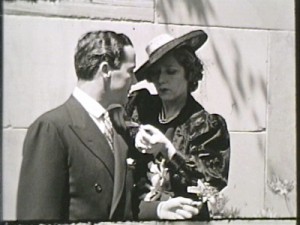
"Black-and-white home movie provides a tour of Rockefeller Center, including scenes of Mary Pickford and Buddy Rogers at a garden event." oldfilm.org
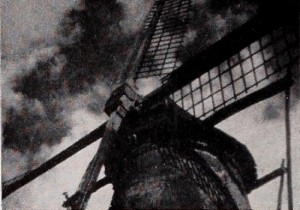
"In Rogge (meaning "rye"), G. J. Gast, jr., of Almelo, Holland, set out to make merely a record film of farm life in a community still committed to primitive farming methods. An ardent realist, he lived with his subject family for nearly a year before shooting his film, which was another full year in the making. An artistic cinematographer. he came up with something more than a record film. Exquisitely framed filter shots emphasize the contrasting values of light and shadow, giving the film a richly rewarding old-master quality. He achieved this by an understanding exploitation of the black and white medium. Unfortunately, his overzealous realism caused some of the interiors in Rogge to be very poorly lighted, detracting from the overall excellence of the film." Movie Makers, Dec. 1948, 495.
Film record of the 1951 and 1952 Rose Parades.
Total Pages: 79